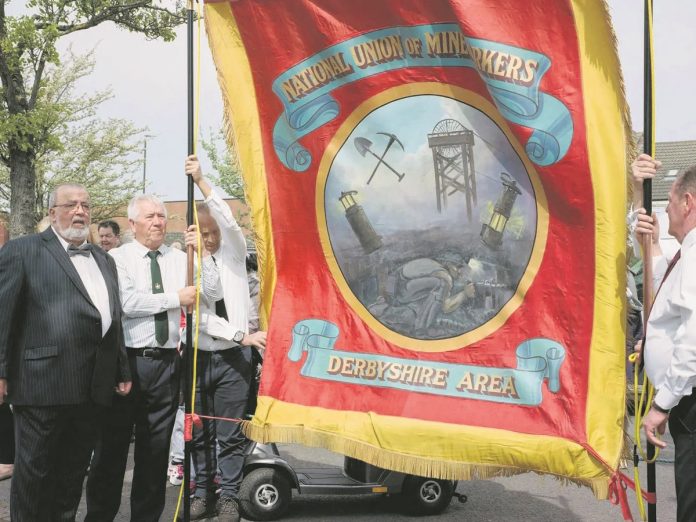
Striking memories from Shirebrook
It’s 40 years since the year-long miners’ strike, but its passion and struggle stays vivid in the memories of those who lived through it. A storm ripped through mining communities but brought Thatcher’s Tory government to the brink of defeat.
Socialist Party members Ronnie Rogers and Jon Dale watched Channel 4’s documentary ‘The Miners’ Strike: Battle for Britain’ first episode, set in Shirebrook, North Derbyshire. Ronnie was a striking Shirebrook miner for the whole year. Jon lived nearby and actively supported the strike.
Ronnie: “The film was more balanced than I expected, but it’s disturbed me watching it and stirred up a lot of strong feelings. I’m proud we fought to save our community. And I’m glad it showed ‘NUM’ painted on a wall round the corner from me – still there after all this time!”
Jon: “It repeated the myth that Arthur Scargill, National Union of Mineworkers (NUM) leader, called the strike. He didn’t. Cortonwood miners walked out when the South Yorkshire pit’s closure was announced, breaking the National Coal Board’s (NCB) commitment to keep it open. The announcement was timed by the NCB and government for the arrival of warmer weather.”
Shirebrook NUM strike leaders described what the strike fought to save – a community and industry where “it wasn’t every man for himself. It was every man for everybody.” When anyone was injured, the pit and community looked after them. Social activities with facilities for all ages centred around the pit. All miners wanted was a warm home, food on the table, education for their kids, to go out for a few drinks, and a holiday once a year – but “government and those at the top don’t want to give it to them.”
Scargill is shown speaking to a meeting packed to the rafters. To cheering, he says: “You’ve only got to do one thing to win this battle – to remain united and stay determined.”
Also seen was Militant’s (forerunner of the Socialist Party) posters outside the North Derbyshire NUM offices, where young miners waited eagerly to hear the Area was backing the strike. (The posters were Alan Hardman cartoons).
Jon: “Tragically, despite tremendous solidarity and determination, this wasn’t enough to win. With the future of Thatcher’s government at stake, miners’ leaders should have called for a 24-hour general strike over the heads of right-wing TUC leaders, as Militant argued at the time.”
Ronnie: “The film didn’t mention the support we got from rail workers. It showed a coal train passing through Shirebrook, but not the railworkers who refused to move coal.
“Two local strike leaders interviewed were 28 at the time (same age as me). A miner’s wife interviewed, active in the Women’s Support Group, was 21. It was young miners and their families who fought hardest for their future.”
At the end of the film, after the pit was demolished, there’s a shot of Sports Direct’s huge warehouse, built later on the site, with unions kept out.
The results of Thatcher’s war on the working class were low pay, insecure agency work, poor working conditions and bullying management. The strike’s defeat, and the trade union and Labour leaders who moved to the right afterwards, boosted bosses’ profiteering. But a new generation of young workers and trade union militants are now emerging who can learn from this heroic struggle.







